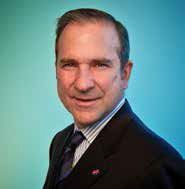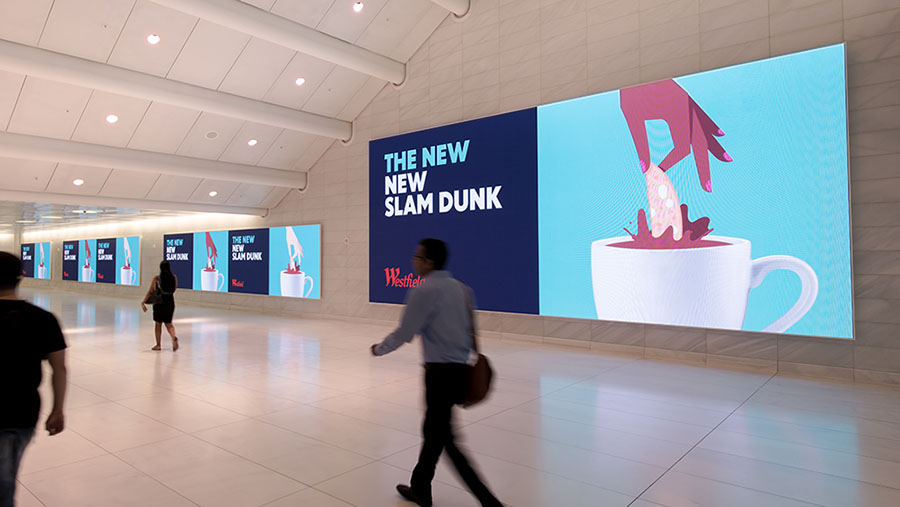
Quick Bio
Name: Jerry Cifarelli
Company: ANC
Location: Purchase, NY
Overtime: The company name was derived from its first investor, Alan C. Cohen, former co-owner of the Boston Celtics, New Jersey (now Brooklyn) Nets, Madison Square Garden CEO, owner of the New York Knicks and New York Rangers.
What do sports statistics and the New York City Metropolitan Transportation Authority have in common? As it turns out, the same disciplines that inform major league teams have been harnessed to power the information and advertising networks deployed in the MTA’s flagship digital transit hub at Fulton Center, the heart of downtown Manhattan’s transportation infrastructure.
In the beginning, nearly 20 years before Fulton Center came together, everything was just about paying the bills for Jerry Cifarelli, starting out as a rotational signage provider to the NBA and MLB. Today, he’s in the enviable position of leading a $60-million, full-service technology displays integrator, with no debt and cash on hand to invest in expanding the brand and growing the business.
The co-founder, president, and CEO of ANC, who originally comes from an advertising background, has overseen an impressive organic growth, from providing static sports signage to custom advertising software, LED and LCDs walls, content creation, and turnkey services. All this led ANC to its position today, having recently completed a monumental project at Westfield World Trade Center, a shopping complex occupying the iconic Oculus structure at the World Trade Center transportation hub—a $4.9 billion landmark. The concourse connects the National September 11 Memorial and Museum and four out of five World Trade Center Towers, along with 11 subway lines, the PATH rail system connecting to New Jersey, Battery Park City Ferry Terminal, and another high-end retail space, Brookfield Place. Quite simply, it’s the high-profile project of most AV integrators’ dreams, and it has changed the game for ANC.

ANC recently completed a monumental project at Westfield World Trade Center, a shopping complex occupying the iconic Oculus structure at the World Trade Center transportation hub—a $4.9 billion landmark gracing lower Manhattan.
Essential to the steady growth that brought them there was the simple formula of building a deep pocket of lasting relationships. “The key has also been the ability to zig-zag and almost anticipate changes in the marketplace,” according to Siobhan Mason, the company’s first employee, now senior VP, administration. Rotational signs led to backlit versions that became standard in sports arenas, which was quickly supplanted by LED video boards, all of which Cifarelli astutely observed unfold and pivoted to support. “When we started, we never imagined adding on all these services, like graphic design, which we’ve actually been doing for over 10 years,” Mason said.
Through those rocksolid relationships that were honed over time, Westfield called ANC and requested that they bid on the World Trade Center project. As a result, ANC went through a rebranding effort, stripping the sports moniker from its name. For Cifarelli, “You do the right thing for [the right] people in the industry, and they refer you to somebody else. That’s how Westfield found out about us—through the work we were doing in the sports space.”
As a small business owner, Cifarelli had the foresight to determine that the only way to be competitive at that size was to have a service model. Competitors were simply hanging signs driven by third-party software. “We came at it very different than anybody else, which happened by accident,” he said. “It really was build the software first, create the software solution, and let’s worry about the hardware later on.”
And the model has paid off. “When we were fortunate that Westfield selected us as the company of choice for the World Trade Center project, it really was for the service. It wasn’t because of our product. It was because of the software solution, as well as the services we’re providing them.”
ANC technicians located on site and remotely produce, change, and schedule content for Westfield advertisers daily.
ANC’s turnkey model covers operations, graphics, and client service. There are more than 200 ANC technicians operating equipment around the country. “We’re selling a solution, not a product,” Cifarelli stated. And it just so happens, he added, “Especially today, that solutions model actually fits better in the non-sports space than it does in the sports space.”
He’s been pleasantly surprised by how this model has allowed his team to walk into meetings with retail or commercial real estate clients and face reactions like “’Are you kidding me? You can do all this?!’ They love it. All of a sudden, we’ve become energized by this whole nonsports space that is perfect for our model.”
The company also has been answering phone calls from people they never envisioned working with, including architects and designers using ANC’s display designs to win bids in corporate lobby spaces. Presenting scores and stats in sports venues has translated to offering weather, news, and public announcements in office building lobbies or live train information at Fulton Center. Same technology; different application.
As is evident, this past year since the Westfield project launched to the public in August 2015, has been a turning point for ANC. Now, “it’s time to expand our wings—let’s go!”
Lindsey M. Adler is editor of SCN. Follow her on Twitter @lindseymadler.














